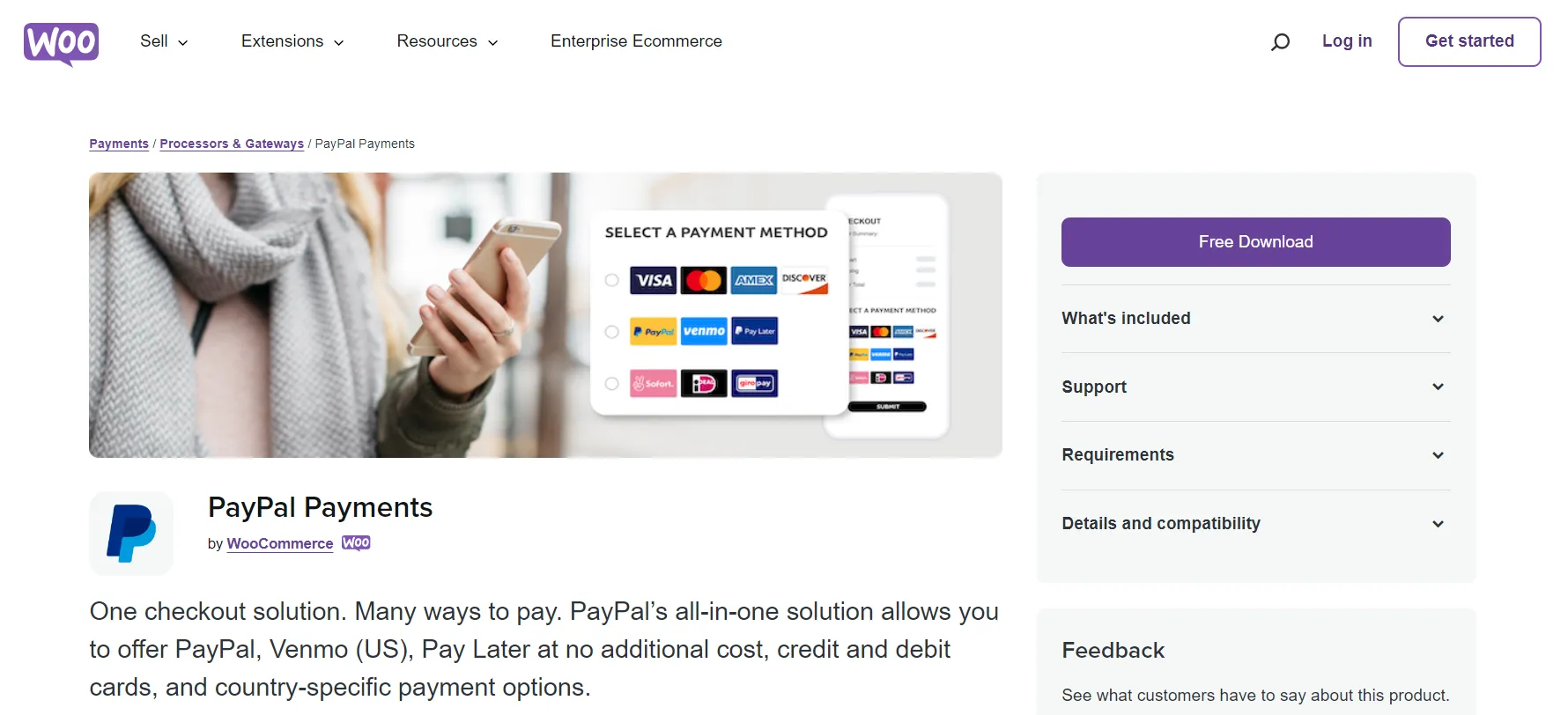If you're here, I understand the dilemma: WooCommerce vs Shopify – which is better for your online business? It's a common question, given that both platforms are among the most popular eCommerce options in the market. Making the right choice or deciding if it's worth switching platforms can be a tough call.
To help you understand the difference between WooCommerce and Shopify, I will walk you through the following criteria:
- Pricing
- Ease of Use
- Page Speed
- Design & Templates
- Apps & Plugins
- Inventory Management
- SEO & Blogs
- Marketing Features
- Payment Gateways
- Shipping Methods
- Dropshipping
- Security
- Support
Let’s dive into it!
WooCommerce vs Shopify: An Overview
Overall, WooCommerce is a free, open-source eCommerce plugin designed specifically for WordPress. It allows users to transform their WordPress websites into fully functional online stores, which explains its popularity in terms of flexibility and scalability. As of this writing, the platform has already accumulated more than 8 million users.
One of WooCommerce's standout features is its user-friendly setup. Simply put, if you already have a WordPress site, it's a breeze to install the WooCommerce plugin and quickly configure your online store.
Don't forget to check out our WooCommerce review to learn more about this platform!
On the other hand, Shopify is a fully hosted, all-in-one eCommerce platform that caters to businesses of all sizes (from startups to large enterprises). It supports the sale of physical products, digital goods, services, subscriptions, etc., while integrating with 100+ third-party payment providers and Shopify Fulfillment Network to streamline the experience for both customers and sellers.
At the moment, there's no doubt that Shopify's popularity among eCommerce merchants remains unmatched. It has attracted over 9 million website owners worldwide and is predicted to stay dominant on the market for years to come.
Here is the detailed Shopify review you may need.
Both Shopify and WooCommerce share the same core eCommerce functionalities:
- Enable users to build and manage a fully functional online store.
- Offer tools for listing products, setting prices, managing inventory, and processing orders.
- Integrate with various payment gateways to accept payments from customers.
- Customize the storefront of your store with themes and design options.
- Prioritize responsive designs to cater to shoppers on various devices like PC, tablet, or mobile.
- Support multichannel selling on popular marketplaces like Amazon on eBay with a multi-channel selling tool like LitCommerce.
Still, there will be many differences on these 2 platforms.
Pros & Cons of WooCommerce vs Shopify
So, after using and testing both platforms for several years, here are my quick summaries of WooCommerce and Shopify's strengths and weaknesses.
Pros | Cons | |
 |
|
|
 |
|
|
WooCommerce vs Shopify: 13 Things That Make A Difference
After comparing Shopify and WooCommerce's similarities, pros, and cons, let's assess their differences to determine which is better: WooCommerce or Shopify.
Feature | Shopify | WooCommerce |
Pricing | Shopify has no security or hosting fees, but themes and apps may be expensive. Yet, Basic ($25/month) for social media sellers offers fantastic value. | WooCommerce is free to install and offers affordable addons. Hosting and development cost are your biggest expense. |
Ease of use | Shopify provides hosting, security, and full-fledge website features without coding. | WooCommerce requires more complex steps since you have to do everything on your own. |
Page speed | Average loading time: 309 milliseconds. | Average loading time: 776 milliseconds. |
Design & templates | 200+ beautiful and appealing theme templates. | WooCommerce themes are simpler yet customizable since you can gain access to its source code. |
Apps & plugins | 13,000+ apps | 900+ WooCommerce extensions and 59,000+ plugins from the WordPress Repository. |
Inventory management | There is no limitation to the number of products. | Merchants can make use of its effective order tracking, stock alerts, detailed reports, etc. |
SEO & blogs | Shopify is improving its SEO optimization day by day. Still, it can hardly defeat WooCommerce. | As a WordPress plugin, WooCommerce offers the best SEO practices along with robust CMS features. |
Marketing | Amazon, Facebook, TikTok, Instagram, eBay, and Pinterest are already integrated into multichannel selling. | WooCommerce marketing capabilities depend heavily on your plugins installation. |
Payment | Shopify offers 100+ payment integrations. | WooCommerce provides 2 default payment options. Otherwise, you have to find and set things up on your own. |
Shipping | You can expand to international markets with Shopify's numerous carriers. | There are more space for you to customize the shipping methods on WooCommerce. |
Dropshipping | Exclusive built-in features, numerous designs for dropshipping niche. | Relies on third-party plugins to provide dropshipping services. |
Security | Automatically secure SSL connection and PCI DSS compliant. | You will have to find and install all certifications on your own. |
Support | Shopify customer support team is available 24/7 via phone, email, and live chat. | You can find answers to your problems via documentations, blog posts, or WooCommerce community. |
Best for Pricing: Shopify
The expenses of running online businesses need to be weighed against the benefits of having a fully functional website. Otherwise, the total cost might easily exceed the available funds.
The Verdict
My analysis of Shopify vs eCommerce WooCommerce pricing leads me to believe that Shopify is more affordable than WooCommerce with all predicted costs.
WooCommerce pricing
As an open-source WordPress plug-in, WooCommerce is free, but additional fees may apply to unlock all features. You will also need a domain name (typically around $12/year) and hosting (ranging from $5 to $25 per month).
I recommend some of the best WooCommerce hosting providers, such as Bluehost or Cloudways. But usually, you cannot prolong the free trials with the hosting service. Below is my conclusion on the WooCommerce costs for your estimation:
WOOCOMMERCE MANDATORY COSTS | |
Hosting | ✧ below $10/month for starters, up to $40/month for bigger plans ✧ up to $70/month for Woo Express |
Domain | ✧ $0 included in hosting plans ✧ $9-$20/year for separate purchases |
Themes | ✧ $0 for free themes ✧ $200+ for one-time payments |
Shipping | ✧ $0-$108/year on average |
Transaction Fees | ✧ WooPayments: no monthly fees, 2.9% +$0.3 per transaction ✧ Other & monthly fees from $0-$30 per month on average |
Communication Costs | ✧ $0-$348 per year with customer communication ✧ $0-$79 per year with SEO plugins |
Security | ✧ $0- $300 per year with tools ✧ $0-$65 per year with SSL Certificates |
WOOCOMMERCE OPTIONAL COSTS | |
Customer Experience | ✧ $0-$200/extension per year |
Plugins Costs | ✧ $0-$200/plugin per year |
Developers Hirings | ✧ $10-$100 per hour ✧ Up to thousands of dollars per project |
Shopify pricing
On the other hand, as a hosted platform, Shopify offers the full package for your online store, ranging from $25 to $2,300+ per month.
Below are the details of Shopify fees:
Basic Shopify $39/month | Shopify $65/month | Advanced Shopify $399/month | |
Transaction Fees *if not using Shopify Payments | 2.9% + 30¢ USD online 2.6% + 10¢ USD in person 2% 3rd-party payment providers | 2.7% + 30¢ USD online 2.5% + 10¢ USD in person 1% 3rd-party payment providers | 2.5% + 30¢ USD online 2.4% + 10¢ USD in person 0.6% 3rd-party payment providers |
Additional staff accounts *assign & manage staff's activities | — | 5 | 15 |
Custom apps | Standard | API PII access included | API PII access included |
Checkout capacity *automatically manage & operate stores | Standard | Standard | 10x |
Shipping Discount *shipping subsidies with leading carriers | up to 77% | up to 88% | up to 88% |
Duties and import taxes | — | — | fully supported |
Localized selling with custom markets | 3 markets | 3 markets | 3 included + $59/mo per added active market |
And here's my take on each pricing package; it might be helpful if you're sitting on the fence about which to start:
- Basic Shopify ($39/month) is best for merchants who want to start selling online with just basic needs.
- The Shopify plan ($105/month) gives you everything needed for growing businesses.
- Advanced Shopify ($399 per month) offers the most advanced features for fast-growing medium-store and large-scale businesses.
Besides, Shopify Starter ($5 per month) allows you to sell an unlimited number of items. However, this plan is not a suitable option if you want to construct a fully functional online store.
Shopify Plus is the best option for enterprise or high-volume businesses. For a monthly fee of $2,500, you’ll get many advanced features and better platform support.
Best for Ease of Use: Shopify
Most users starting an online store are not web designers or Shopify developers. Even users who are familiar with basic concepts like me also need a platform that is easy to set up and operate.
The Verdict
In terms of ease of use, Shopify absolutely edges over WooCommerce with little technical expertise.
WooCommerce Ease of Use
Since WordPress WooCommerce is not a hosted solution, you must manage your store's installation, updates, backups, and security.
Setting up WooCommerce is quite complex because I needed to install WordPress first. Following these steps to institute WordPress:
- Get a domain name on WordPress
- Sign up for a hosting account
- Install WordPress
- Find and install a WordPress theme
Here’s our tutorial video to help you set up your WooCommerce store with ease.
It's my estimation that you should choose a trusted WordPress hosting service that will take care of the whole setting process for you, including hosting, domain, and WordPress installation because those steps do require some web-related knowledge.
Shopify Ease of Use
The main advantage of Shopify is that it has a built-in online store, so almost everything is intuitive. Thanks to its simple interface, setting up and managing stores on Shopify is a breeze.
To start with Shopify, I first created a free trial account, followed some basic set-up instructions, and then built my store. From my point of view, Shopify is designed for all owners, even for those who have zero coding knowledge (which most starters do).
Build your Shopify store only in 10 minutes, can you believe it? Watch our Shopify tutorial below to confirm the answer:
Best for Page Speed: Shopify
Shoppers, no matter how interested they are, are not willing to wait more than a few seconds. If your site is slow-loading, you stand to lose not only current but future customers as well.
Hence, when determining the right platform for your online store, you should definitely consider WooCommerce vs. Shopify page speed.
The Verdict
Another point goes to Shopify in terms of WooCommerce vs Shopify page speed.
WooCommerce Page Speed
The performance test gathered from this study showed that WooCommerce is actually rather slow. The average page loading time of all monitored stores reached 776 milliseconds, and the average cart page loads in 1.32 seconds!

Optimizing loading time in WooCommerce is up to you and your hosting plan. If you choose to go for cheap $2 hosting, you cannot expect it to be fast, no matter how much you pay SEO experts to level up your site for you.
Shopify Page Speed
In contrast, Shopify’s web pages load in 309 milliseconds, the ideal loading time for any website since Google recommends an average of 500 milliseconds of loading time! In light of its fast response times, Shopify delivers a very good overall user experience.

Best for Design & Templates: WooCommerce
When it comes to themes, we all understand that they’re an important factor in attracting customers. A good theme can make or break a business, and a positive experience can create long-lasting business relationships.
The verdict
I'm inclined to think that both WooCommerce and Shopify provide their users with various themes but WooCommerce has a bit more themes designed by a vibrant community of developers and freelancers.
WooCommerce Themes
The design and template of WooCommerce are synonymous with a whole new world appearing in front of your eyes. From its official store, you can find around 100+ both free and paid options, which mostly vary from $0 to $79/year.

Also, because WooCommerce is a WordPress plugin, it's been designed to work well with almost all themes out there. So, in most cases, you can simply pick any theme, like thousands, and make it work with WooCommerce. If you like, you can also explore the fantastic collection of WooCommerce themes on Themeforest.

I personally don't find WordPress WooCommerce themes very attractive, but I do enjoy being able to customize some code in WordPress.
If you can’t decide which theme to pick, these are some of the best WooCommerce themes that I have tried out for suggestions.
Shopify Themes
Currently, Shopify offers 200+ options. Each theme has specific variations, so technically, you are getting even more different designs.

Created by a group of professional website designers, Shopify themes are generally elegant and tidy yet feature-rich and mobile-friendly. Aside from that, customizing and changing Shopify themes has never been easier, thanks to its intuitive Shopify editor and Liquid code. I can save up tons of time thanks to recent upgrades in editing workflow and theme load times.
What I love is that even on the free trial, I can try all premium Shopify themes and test them out. If it's your preference, here are my favorite Shopify themes.
Best for Apps & Plugins: WooCommerce
Regardless of how robust an eCommerce platform is, you’ll always need to add some extensions to boost your store. Luckily, WooCommerce vs Shopify both offer a massive directory of plugins and integrate with many third-party services.
The Verdict
WooCommerce plugin defeated Shopify in quantity with 800 WooCommerce extensions and 59,000+ plugins from the WordPress Repository.
WooCommerce Plugins
If you're choosing WooCommerce on WordPress, you're in luck! You'll have access to WordPress's massive plugin repository, with almost 60,000 free and paid plugins to meet all your logistical, technical, and marketing needs. On top of that, WooCommerce offers more than 850 extensions tailored for eCommerce.
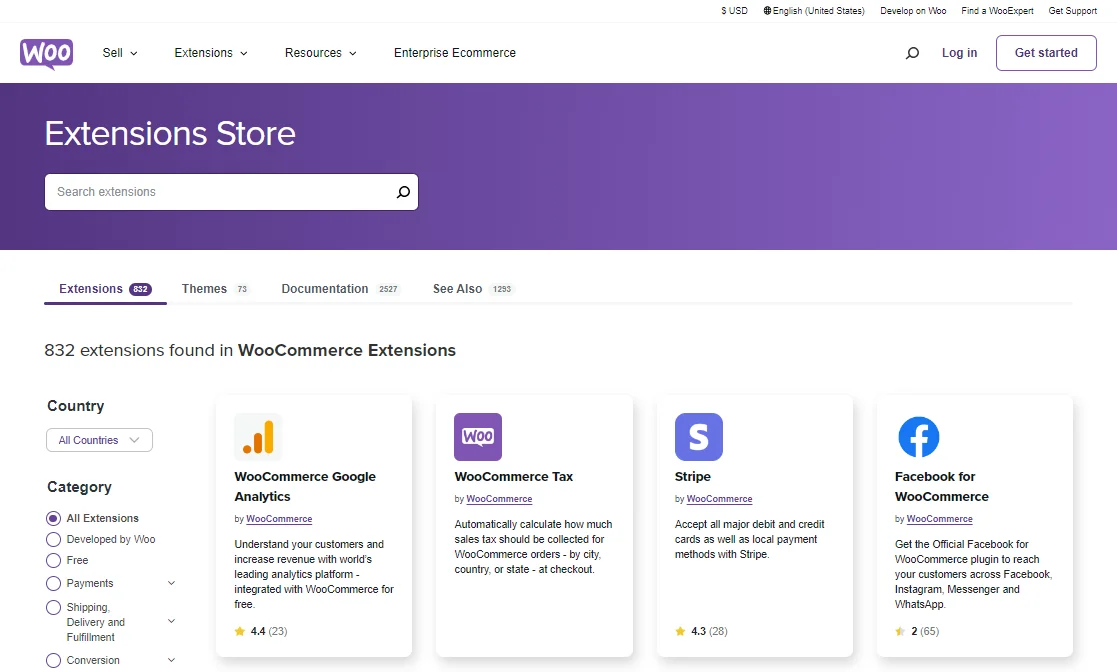
Shopify Apps
Shopify is packed with 13,000+ apps and extensions developed by both in-house teams and third-party developers.

The huge chunk of apps on its store is divided into different categories, such as inventory management, orders and shipping, sales and conversion, etc. All these extensions support you in monitoring your eStore seamlessly and driving more traffic and sales.
Best for Inventory Management: Shopify
Now turn to WooCommerce vs Shopify comparison based on inventory management!
The verdict
When it comes to inventory management, WooCommerce allows for unlimited variable products, but third-party assistance may be needed for optimal performance. In contrast, Shopify offers full control of the inventory system, making it easier to run your store, which is why many consider it better than WooCommerce.
WooCommerce Inventory Management
WooCommerce offers a great degree of flexibility, and its inventory management feature is no exception.
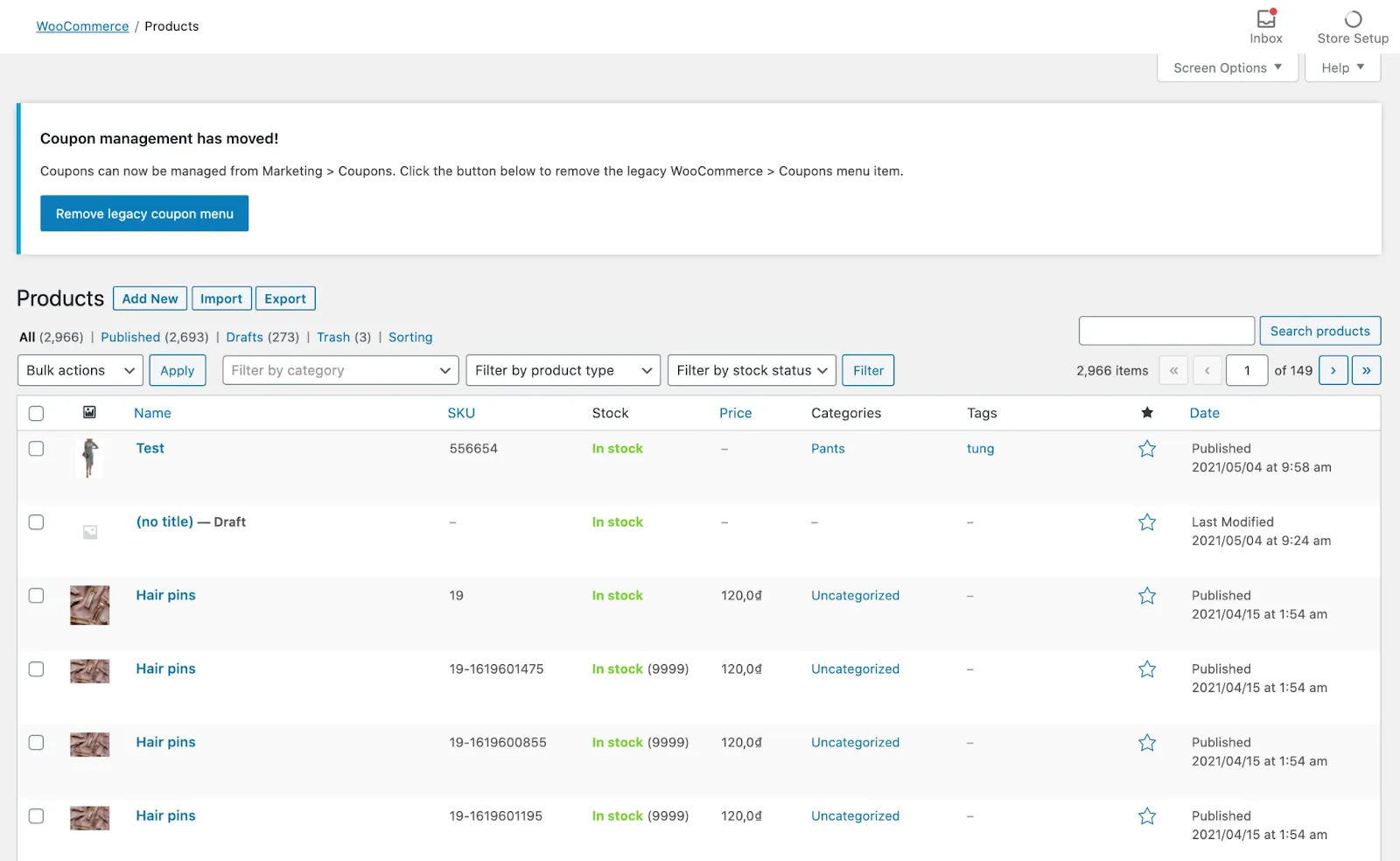
I can painlessly use WooCommerce to create inventory reports and change any product attributes. What I love about it is that there are no limitations on how many variable products you can create and manage.
Shopify Inventory Management
Similar to WooCommerce, Shopify empowers merchants with full control over the Shopify inventory management system. Under the hood, I can track stock and easily access stock alerts, automated purchase orders, in-house revenue reports, and so on.
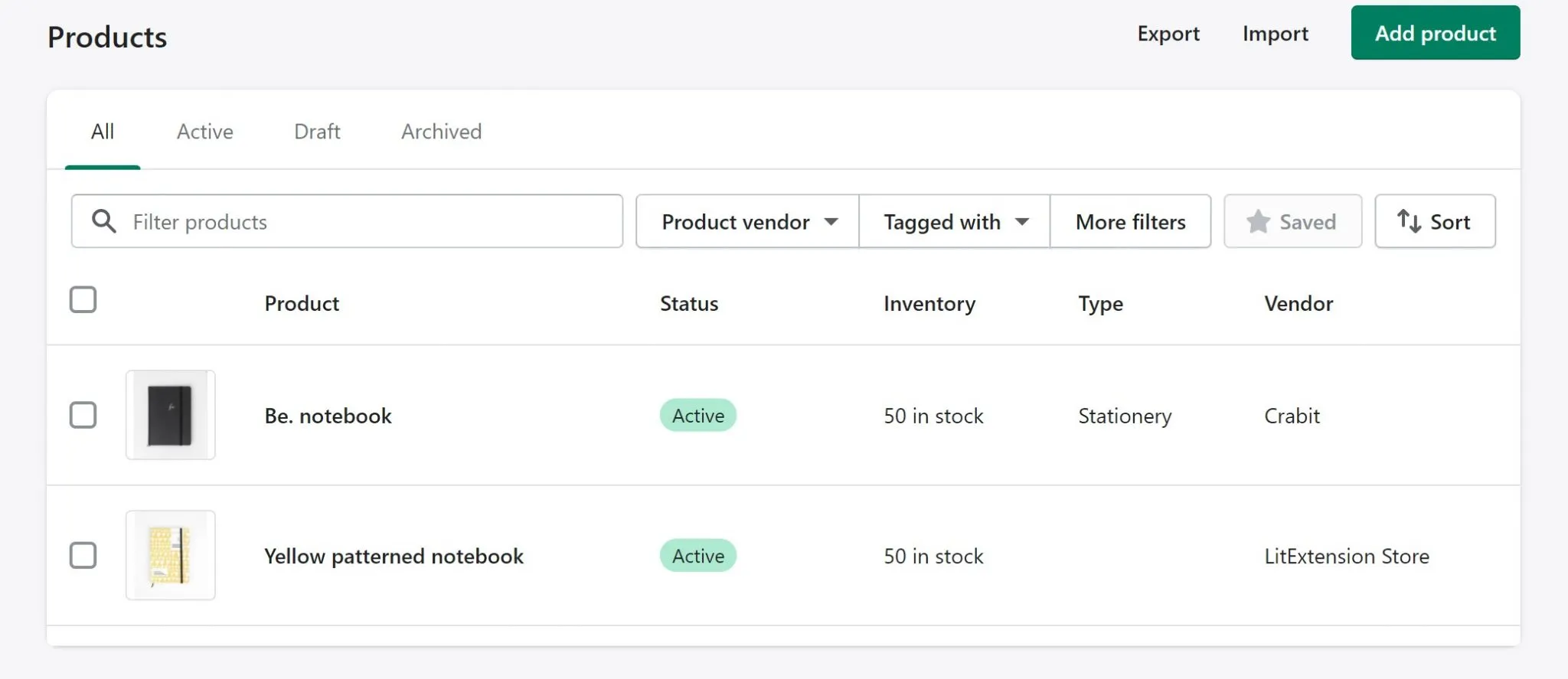
In addition, I can add single or buck items, customers, orders, and other data manually or with the help of Shopify CSV files. Shopify users can also take advantage of a wide range of inventory apps available to run businesses seamlessly.
Best for SEO & Blogs: WooCommerce
To fully analyze the SEO capabilities of the two platforms Shopify vs WooCommerce, certain criteria need to be taken into account, such as:
- SSL Certificates
- Auto XML Sitemap
- 301 Redirects
- Apps and Plugins for SEO
- Blog Posts Section
The verdict
It seems to me that WooCommerce has more advantages in the SEO area thanks to the WordPress editor.
WooCommerce SEO
Being built on a dedicated blogging platform, WooCommerce definitely has an advantage in SEO. With the WordPress editor, it's much easier for me to alter body content, basic URL redirections, meta descriptions, alt tags, and other page elements to optimize product pages.
At the same time, WooCommerce also offers numerous SEO plugins that I can use to optimize your store, and Yoast SEO is considered the most well-known SEO plugin.
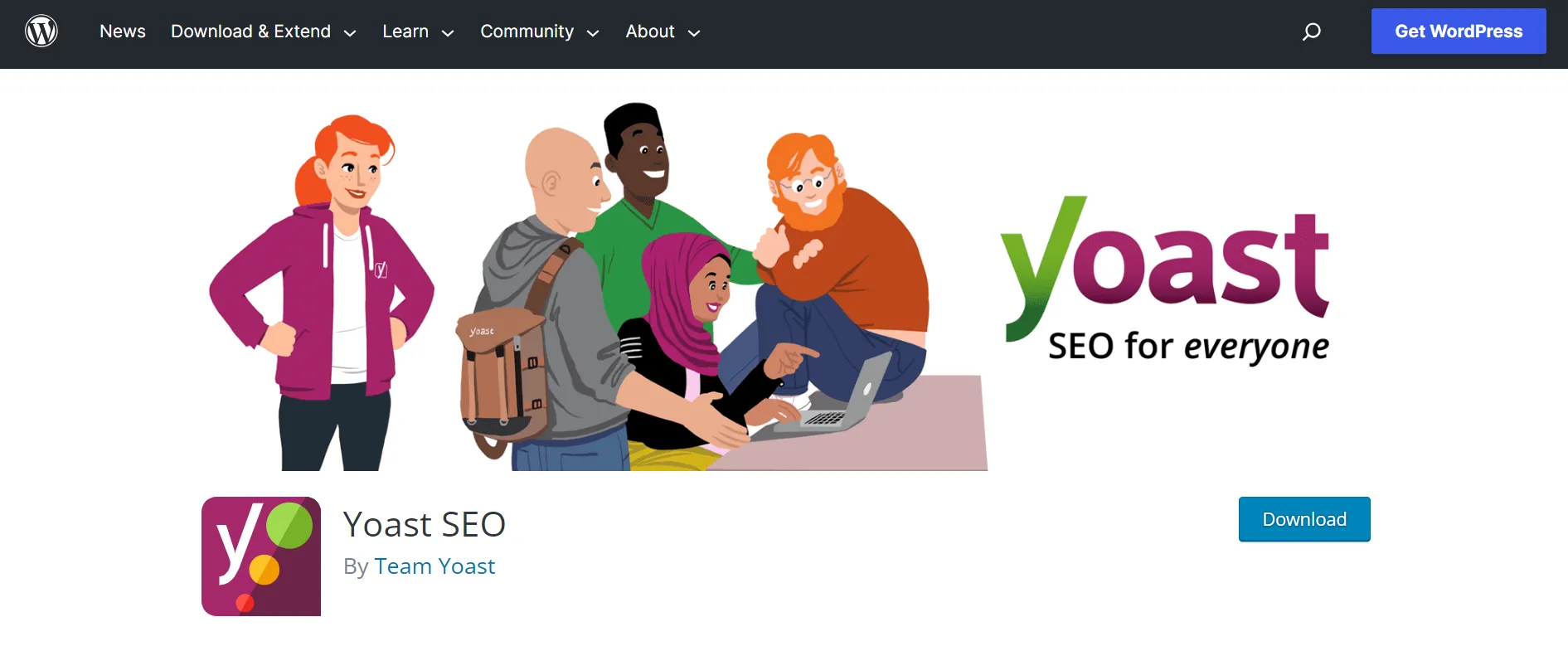
Moreover, blogs and content are where WooCommerce shows off its muscles. I can create a blog for WooCommerce by adding a post right from the WordPress Admin dashboard. Also, I can improve customers' blogging experience by utilizing templates on Storefront – WooCommerce default store design or purchasing nicely designed blog templates on ThemeForest.
Shopify SEO
On the flip side, Shopify does have a few limitations regarding SEO. For example, it's not fully customizable regarding URLs, and creating sub-categories can be a bit tricky.
Nonetheless, Shopify has all the essential features I need for eCommerce SEO, and they're pretty easy to use. The SEO apps for Shopify are also known for being user-friendly when it comes to installation and operation.
With Shopify, setting up a blog and creating posts is a breeze. It doesn't take much time or effort, and I can easily optimize my Shopify blog for SEO with just a few clicks.
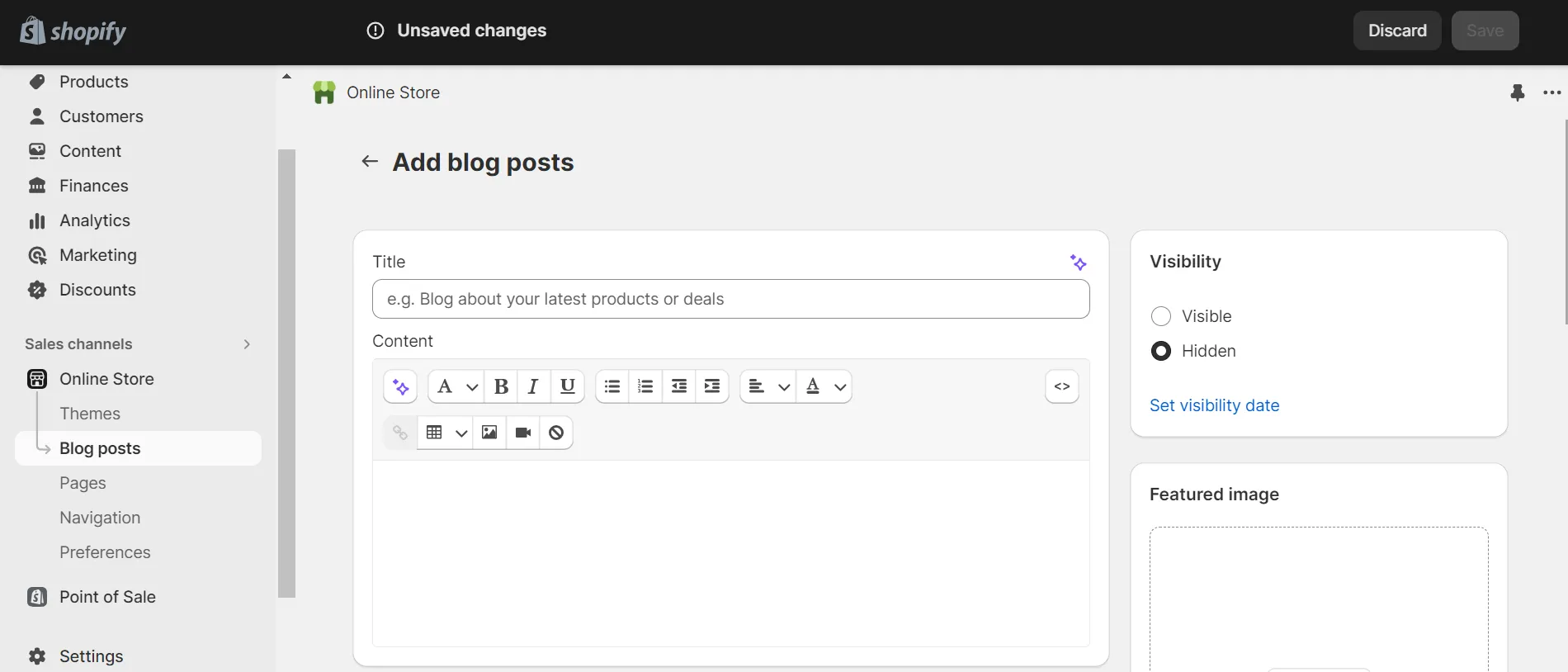
When comparing Shopify vs WordPress, there are definitely some limitations. Still, you can be reassured that Shopify still provides all the essential SEO functions you need to build your store.
Best for Marketing Features: Shopify
Marketing is a core function that every online merchant needs to focus on in order to increase awareness of their brand and products. So, let's join us to explore the Shopify or WooCommerce battle on marketing features.
The Verdict
Shopify wins 5 out of 5 when it comes to marketing features between WooCommerce vs Shopify. With WooCommerce, you have to rely heavily upon third-party apps to get the best outcome.
WooCommerce Marketing
You can count on WooCommerce when it comes to syncing your shop with Amazon, eBay, and social media sites like Facebook. I can manage your channels from your WordPress dashboard with free extensions that are certified by the platform for that. Unfortunately, the list doesn't include Google Shopping.
Unlike Shopify, which provides a built-in POS system for its users, WooCommerce does not have a native omnichannel solution within the platform. However, you can always find a suitable POS system for WooCommerce from various providers.
Shopify Marketing
Shopify allows you to effectively manage several email marketing campaigns at the same time. You can extend your possibilities with the best Shopify email marketing apps, such as MailChimp, Klaviyo, or Omnisend. Not to mention, you can keep track of all the necessary statistics from a single dashboard. These include conversion rates, sessions, order value, total reach, and so on. As a result, strategies to improve your campaigns will be applied on time.
If I want to sync my online shop to the social media store to have shoppable posts on Instagram, Facebook, or Google, I could easily do that in a few slick clicks. In all honesty, Shopify does this better, especially if you’re going to use Pinterest.

There's not much to say about omnichannel since Shopify is one of the top competitors in this section. It allows merchants to sell their products through multiple touchpoints, such as online stores, physical retail locations, social media platforms, and marketplaces while centralizing inventory, order management, and customer data, ensuring a cohesive and efficient operation across all channels.
Besides, you can take advantage of Shopify analytics to track key metrics, such as total sales, orders, average order value, conversion rates, and customer behavior. This data helps you understand your customers, identify trends, and measure the success of your marketing campaigns. By analyzing this information, you can make informed decisions to optimize your marketing strategies and drive business growth.
Best for Payment Gateways: Shopify
Regardless of the type of products or services you sell, the ultimate goal is always to convert visitors and facilitate their subsequent transactions. Luckily, WooCommerce vs. Shopify offers a wide variety of tools to help you with this.
The Verdict
Shopify wins this round because it offers more than 100 payment integrations, while WooCommerce offers only 2 default options.
WooCommerce Payment Gateways
WooCommerce comes with default payment options for PayPal and Stripe, two proven payment processors. Most WooCommerce online stores can easily use either of these options without any issues. This means I don't even need a bank account to get started.
If you prefer to use a different service, WooCommerce allows you to do so. It also supports all other popular payment service providers through add-ons.
WooCommerce Paypal PaymentsThis platform supports many regional and less popular payment gateway services. Since there is no barrier to entry, every payment company can build and support add-ons for WooCommerce.
I am only charged transaction fees by my payment gateway or bank. WooCommerce will never charge you a percentage of the transaction fee; the corresponding payment processors will do so. However, its fees differ from one provider to another.
Shopify Payment Gateways
Shopify offers more than 100 payment gateways for you to choose from, but you need to pay a transaction fee of 0.5-2%, depending on the monthly plan you purchase. The higher the plan you choose, the lower the transaction fee you pay for Shopify.
Shopify also has its payment processor, Shopify Payments, which is totally free and super straightforward. With Shopify Payments, I no longer have to go through a third-party provider and be approved for a merchant account before I can process payments. This payment gateway also grants users access to Shopify's accelerated checkout button, Shop Pay.

Furthermore, if you’re selling internationally, some Shopify features can significantly support your business. For instance, with the new update, Shopify will automatically calculate and include tax in product prices based on your customer’s country.
Also, Shopify allows pricing control by region with international pricing. It means that you can choose specific prices per product, per country, or per region.
Best for Shipping Methods: A Tie
One thing I have learned while working in this industry is that you should not underestimate the power of shipping. Providing a trouble-free delivery process is a great way to retain customers and boost brand loyalty. So, let's see who's the winner in the shipping section—WooCommerce vs. Shopify!
The Verdict
It's a draw. Shopify boasts an integrated, user-friendly system with real-time rates, while WooCommerce focuses on flexibility and customization through a variety of shipping plugins.
WooCommerce Shipping
WooCommerce offers a versatile and customizable shipping system. Merchants can set up shipping methods to match their specific business needs. The platform provides basic shipping options like free shipping, flat rate, and local pickup.
Additionally, WooCommerce's shipping extensions and plugins enable integration with major carriers such as USPS, UPS, FedEx, DHL, and more, providing real-time shipping rates based on customer location, package weight, and dimensions.
Shopify Shipping
Similarly, Shopify shipping also integrates with the biggest carriers like USPS, UPS, and DHL, as well as offers calculated shipping rates based on real-time factors. Merchants can also offer free shipping or set fixed flat rates for their products.
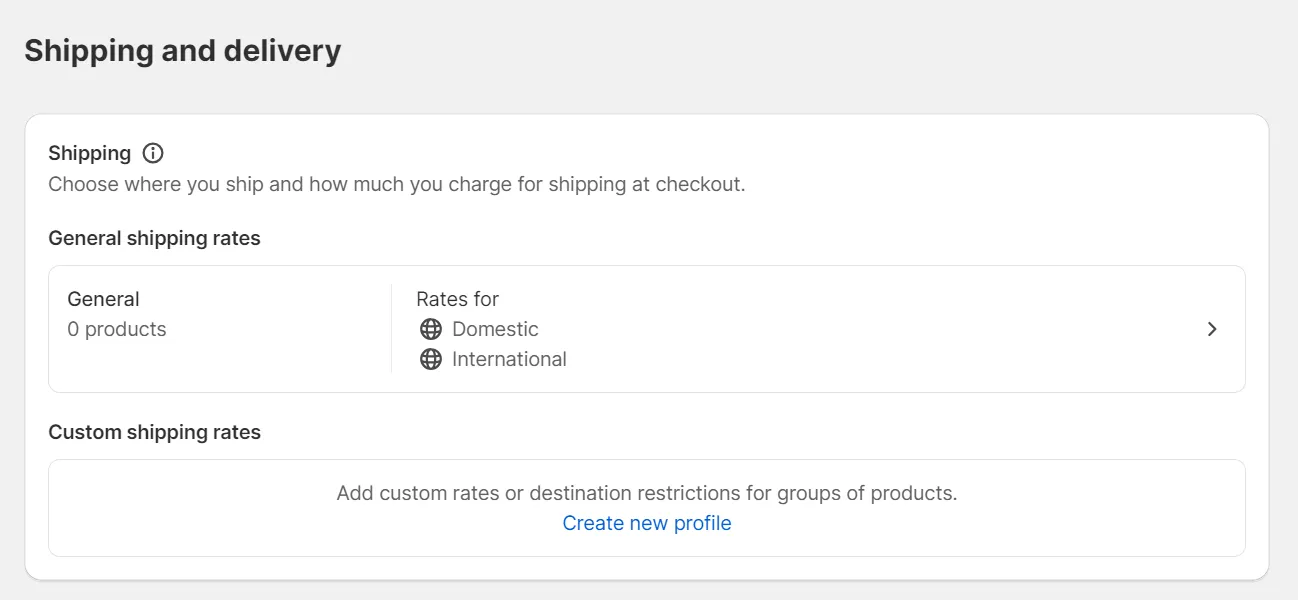
However, its connection with Canada Post, Australia Post, and more takes Shopify shipping to the next level. This gives businesses the flexibility and convenience to ship globally and effectively meet their customers' delivery needs. Also, changing shipping on Shopify was quite easy.
Best for Dropshipping: A Tie
Dropshipping is an order fulfillment method that does not require merchants to keep goods in stock. Instead, whenever a new order is placed, the retailer purchases the item from a supplier and has it directly delivered to the customer. So, let’s delve into dropshipping with WooCommerce vs. Shopify!
The Verdict
Apparently, Shopify WooCommerce are two of the best eCommerce systems available due to their advanced features, strong design, and stellar customer service. Your dropshipping enterprise may benefit from using either platform since they each have unique advantages.
WooCommerce Dropshipping
It's my personal opinion that WooCommerce is a favorable choice for dropshipping companies. With WooCommerce, drop shippers can pay for plugins that support instantly importing products, completing orders from your website, and more. The majority of those apps share the same functions.
Shopify Dropshipping
Currently, Shopify has integration apps for several popular dropshipping markets. Two of the most well-known are Dropified and Spocket.

No matter which app you choose for your Shopify dropshipping business, you will greatly benefit from its robust and exclusive features.
Best for Security: Shopify
Security is a huge concern when running an online business. Hence, it is no surprise that many merchants ask the question, “WooCommerce vs. Shopify, which is better for security?”
The Verdict
My take on this is that Shopify apparently outperforms WooCommerce in the security department since there’s less to worry about regarding security and data safety.
WooCommerce Security
With WooCommerce, most of the security falls into your own hands. In greater detail, you will have to get your own SSL certificate, configure your site security plugins, implement two-factor authentication, comply with PCI compliance, and do some other things to protect your site all by yourself.
Shopify Security
Shopify, on the other hand, completely takes care of updates and security issues in the background.

This platform comes with an SSL certificate built-in for free, meaning all data transferred between you and your clients is encrypted. The Shopify system also runs on a Level 1 PCI-compliant server, which is mandatory to accept credit card and debit card details.
Best for Support: Shopify
Every e-merchant, especially beginners, needs support when starting their website on any platform. Things are new, and you cannot be familiar with all the features, not to mention the problems you might run into during the setup process.
Both WooCommerce vs Shopify offer customer support, but there's only one winner.
The Verdict
Both systems provide customer service, but Shopify is much superior. It's quite easy to understand since this is a hosted eCommerce platform, while with WooCommerce, you have to handle almost everything on your own.
WooCommerce Support
Just like most of the open-source eCommerce solutions out there, WooCommerce doesn’t support live chat, phone, and email. However, as a merchant who wants to take control of their own support strategy, WooCommerce impresses me by providing plenty of resources.

This platform provides assistance in WooCommerce Docs and an FAQ section where you can find answers to almost every common question. Furthermore, thanks to its large user base, I can also seek support from a vibrant community of peers, developers, and WooExperts in a heartbeat in case an unwanted contingency happens.
Shopify Support
Shopify, on the other hand, is renowned for its excellent customer support, which is available 24/7 via phone, email, and live chat. In addition, Shopify has an enormous database of FAQs and a Shopify Forum that is always willing to help.
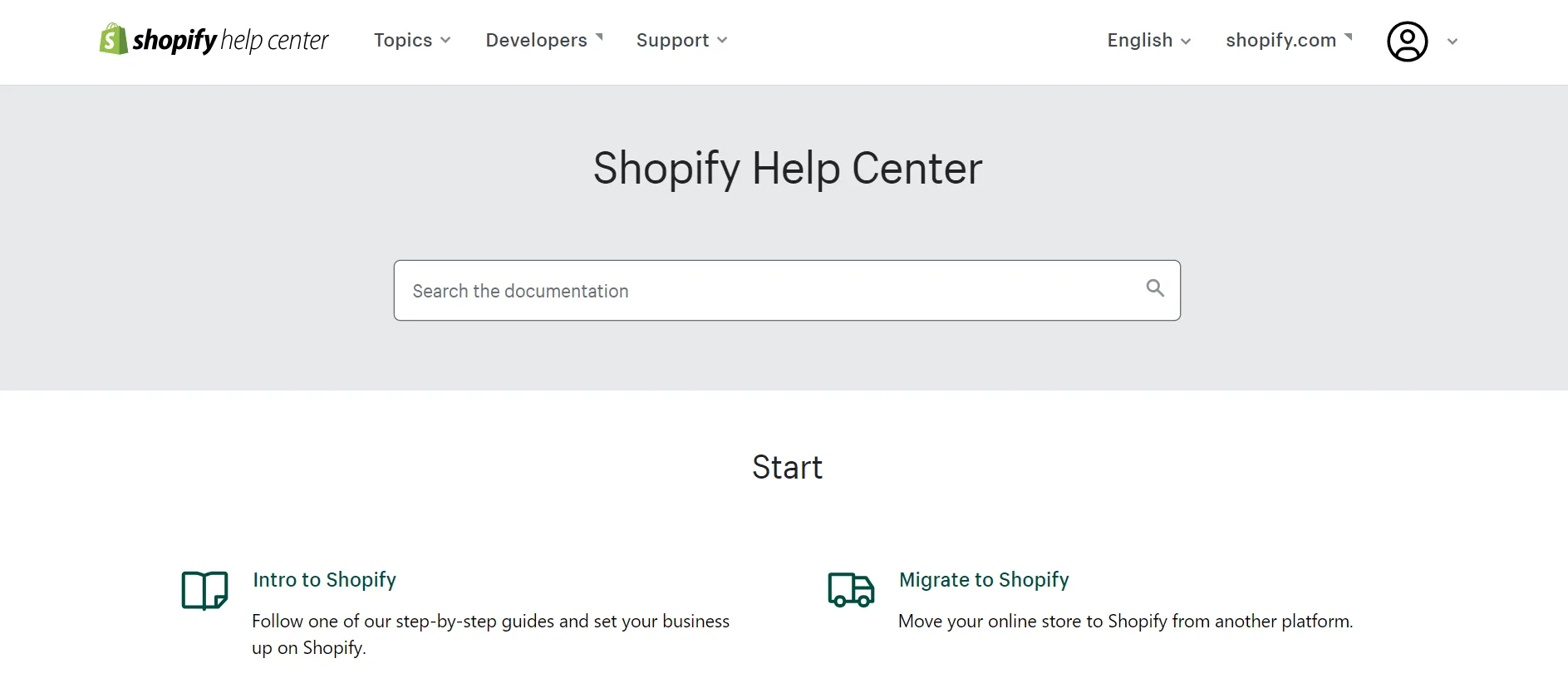
WooCommerce vs Shopify: Which One Should You Go for?
We have made great progress in reviewing WooCommerce vs Shopify and its features. Now, it is time for the final verdict to help you decide whether to choose WooCommerce or Shopify.
From my vantage point, if you’re looking for a solution with handy SEO features, high customizability, and flexible scalability, definitely go for WooCommerce. Also, if you want more control over your design, don’t mind tinkering, or your major marketing plan is to drive traffic through content for search engines, then choosing WooCommerce is absolutely fine.
If you’re new to eCommerce or you don’t want to bother about technical details or complex setup processes, enjoy the utmost security and dedicated support from the Shopify team. Go for Shopify.
Want to Migrate Your Store from WooCommerce to Shopify?
LitExtension Automated Migration Tool transfers products, customers, and orders
from WooCommerce to Shopify—fast, accurate, and hassle-free.

How We Tested
Before we began, our team created test stores on both platforms to simulate a realistic eCommerce environment.
For instance, for WooCommerce, we installed WordPress on a hosting provider, set up the WooCommerce plugin, and configured basic settings such as currency, tax rates, and shipping options. Similarly, we followed Shopify's guided onboarding process and configured store settings (e.g., payment gateways and shipping rates) to match those on the WooCommerce store.
Once done, we pinpointed the strengths and weaknesses of WooCommerce vs Shopify based on the criteria below:
- Customization and flexibility (25%)
- Ease of use (20%)
- SEO and blogging (15%)
- Performance and page speed (10%0
- Pricing/value for money (10%)
- Apps and integration 10%)
- Security (10%)
- Customer support (5%)
Can You Switch Between WooCommerce vs Shopify?
Yes, switching between WooCommerce vs Shopify (or vice versa) is entirely possible with LitExtension! With over 12 years of experience and 200,000+ satisfied customers, we always offer high-quality services tailored to meet your specific needs.
We understand that no two stores are the same, which is why we provide a 100% personalized migration experience. Our team also prioritizes transparency and delivers a clear timeline that aligns with your business schedule.
Best of all, migrating with LitExtension means ZERO downtime for your store. You can continue selling without any interruptions or delays in your operations, meaning your business remains unaffected while our service handles the heavy lifting.
Currently, LitExtension provides two migration packages:
- Automated Migration: This option lets you handle the migration yourself by following simple, step-by-step prompts. It's ideal for small- to medium-sized stores with straightforward data requirements.
- All-in-One Migration: Perfect for more complex or custom data needs, this package requires no effort on your part. Simply share your requirements with us, and our team will manage the entire process for you.
Why wait? Contact us today for the best migration experience!
Need Help To Migrate Your Store?
LitExtension provides a well-optimized All-in-One migration service for your data transfer.

WooCommerce vs Shopify: FAQs
When it comes to choosing between Shopify and WooCommerce, it really depends on what you need. Shopify is super user-friendly and comes with lots of built-in features. On the other hand, WooCommerce gives you more flexibility and customization options.
If you're looking for a platform that's easier to use and requires less technical maintenance, you might want to consider making the switch. But if flexibility and control are important to you, WooCommerce could be the better choice.
Both platforms have strengths when it comes to SEO optimization, but WooCommerce might offer more advanced customization options.
WooCommerce is great because it gives you lots of flexibility and customization options, plus there are no transaction fees. Another great thing is that you have complete ownership of your website and data.
Still, which platform works best for you also depends on your business goals. To make more informed decisions, check out LitExtension blogs for detailed comparisons, such as BigCommerce vs WooCommerce vs Shopify and WooCommerce vs Shopify vs Magento.
Bottom Line
Finally, if you are ready to upgrade your online store and migrate from WooCommerce to Shopify, LitExtension is here to assist you. Our specialized migration service ensures a smooth transition, allowing you to effortlessly transfer all your essential data, including products, orders, and customer information,…
Should you have any questions regarding WooCommerce and Shopify migration, the LitExtension support team is more than happy to help! You can also check out our LitExtension blog and join our Facebook Community to get more eCommerce tips and news.
